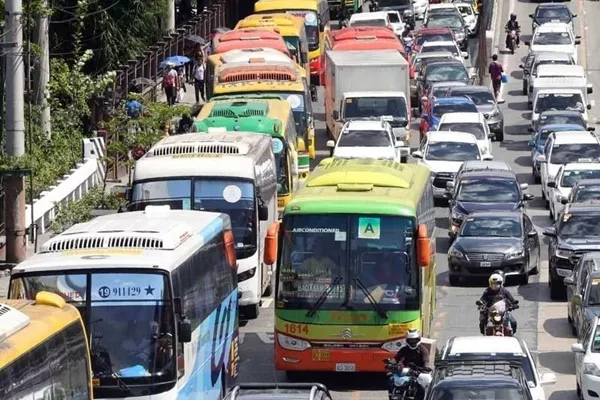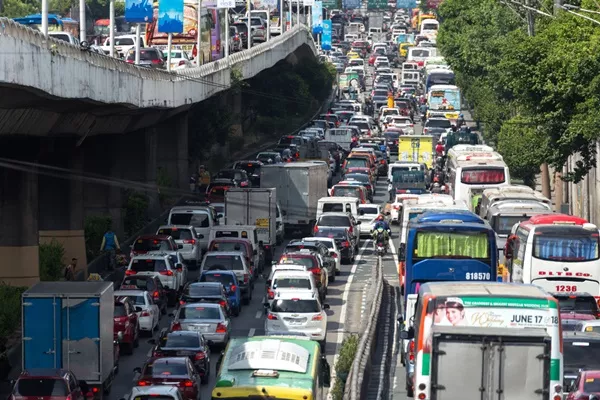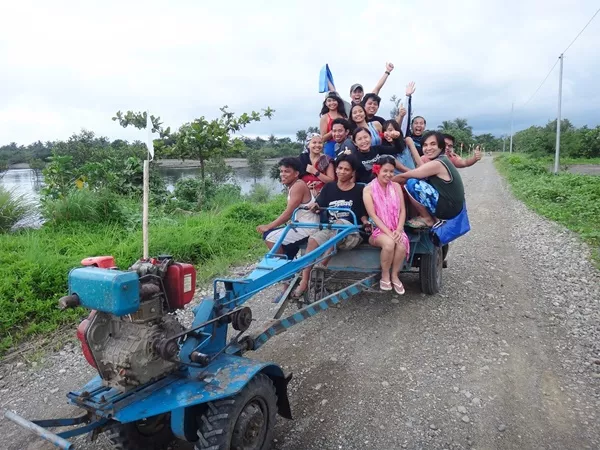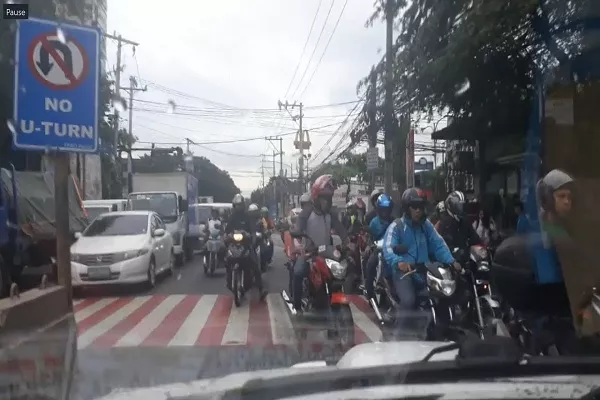Whether you’re a motorist or a commuter in the Philippines, being on the road is a unique experience. There are times that you feel scared with reckless drivers around, other times you can feel the excitement of driving on empty streets past midnight when practically is already sleeping at home.
There are a number of ways to get around on Philippine roads and do note that they all have their own hazards. Philkotse.com lists down some of these vehicles that you will have likely encountered at some point on the road.

Oftentimes, solving traffic is a matter of having the right mindset
1. City buses
Many Filipinos usually take the bus going to work because it is affordable and convenient, especially with the MRT’s questionable reliability. However, many of these buses are notorious for being reckless on the road: speeding like there’s no tomorrow, indiscriminately shifting lanes without warning, even staying too long to pick up passengers and congesting the road as a result.
Bus drivers rush to outdo each other in getting as many passengers as they can because most of them are paid on a commission basis. Worse, many of them bully smaller vehicles on the road on account of their size, and this often results in an accident.

The MMDA is exerting efforts to decongest EDSA of the buses that ply along the route daily
2. Provincial buses
The long distances that provincial buses travel on their routes means that their drivers are often fatigued, which diminishes their physical reflexes and mental alertness, forcing them to rely on illegal drugs just to stay awake.
Narrower roads in the provinces also present a problem, especially with a bus approaching at 100 kph just to get its passengers to their destination on time; this often forces drivers to engage in dangerous maneuvers such as overtaking, counterflowing and tackling curves without slowing down.
There was also the issue of overloading before, where provincial buses would take on passengers exceeding the legal limit since more heads on board translates to more revenue for the bus company.

Provincial buses travel on long distances mean more dangers not only to passengers but also the wanderers
>>> Read more: Hailing a ride or public transportation in the Philippines: An issue of safety
3. Kuliglig
The kuliglig is a loud and makeshift version of a tricycle, which is a popular yet illegal form of transportation. Named after the local term for crickets, a kuliglig is usually powered by an onboard generator. In rural areas, kuligligs refer to hand tractors attached to a passenger coach, while in urban settings, it’s usually a pedicab with a generator attached.
Their makeshift nature means that kuligligs are not engineered to safely ferry passengers around, especially since generators are not certified to power vehicles. Accordingly, kuliglig drivers do not hold licenses and are unable to provide insurance coverage in the event of a mishap.

Kuliglig shows Filipino ingenuity but has much to say about being safe
4. Motorcycles with reckless riders
Motorcycles provide greater ease of mobility compared to four-wheeled vehicles, but unfortunately, this tends to embolden many riders to do reckless things.
Many of these riders love to drive fast and appear out of nowhere, weaving in and out of a traffic queue like it’s nobody’s business, then overtaking on the right side of a turning vehicle. There are also incidents when riders randomly counterflow to avoid traffic jams but not in the right ways.
Worse, they would often occupy the pedestrian lane and footbridge, endangering even those traveling on foot. If you drive a car and get into an accident with a motorcycle, chances are you might end up on the losing end with damages and hospital bills (unless you own a dashcam or have sympathetic witnesses nearby).

Motorcycles can instantly appear out of nowhere
5. Massive trucks with loads of cargo
Even for experienced drivers, it’s normal to feel nervous when driving alongside a fleet of trucks, especially at night when the truck ban has been lifted. This scenario is quite common in areas where trucks are allowed to pass, such as near shipping ports, industrial areas, and highways.
These trucks are usually restricted to just one or two lanes, but it can difficult to overtake because most of them are slow-moving.
>>> Also check: 5 must have skills & qualities to be a good truck driver.
Trucks also have bigger blind spots compared to smaller vehicles, which is why you need to stay within the truck driver’s field of view at all times. Older trucks may also have some of their parts falling off unexpectedly, or have faulty locks which may cause their cargo to fall on unsuspecting motorists.

Driving alongside a container truck is risky, especially one with faulty fasteners
Some types of a cargo truck to look out for include:
- Trucks that transport bottled soft drinks and beer
- Those trucks carrying wooden logs
- Tanker trucks that transport fuel and volatile chemicals
- Trucks carrying container vans
When driving in busy streets, it is essential that we remain alert and awake at all times; no one, not even the most experienced drivers, can predict exactly when a road accident will happen.
Always remember to keep your distance from reckless drivers and large vehicles as much as possible, more so if it’s a combination of the two. Also, be mindful of the speed limit to ensure that you and your passengers remain safe at all times. A little presence of mind and common sense will go a long way.
>>> Don't forget to visit Philkotse.com to find more useful tips for safe driving!
Recent posts
- Top 5 common PUVs drivers health issues & how to avoid Aug 16, 2022
- 12 types of Filipino passengers that we encounter on public transport May 20, 2019
- Only in The Philippines: 5 Public Utility Vehicles That Are Uniquely Pinoy May 27, 2021
- Pros & cons of buying a pickup truck in the Philippines Feb 17, 2021
- 8 things you can do while stuck in traffic in the Philippines Mar 25, 2020











